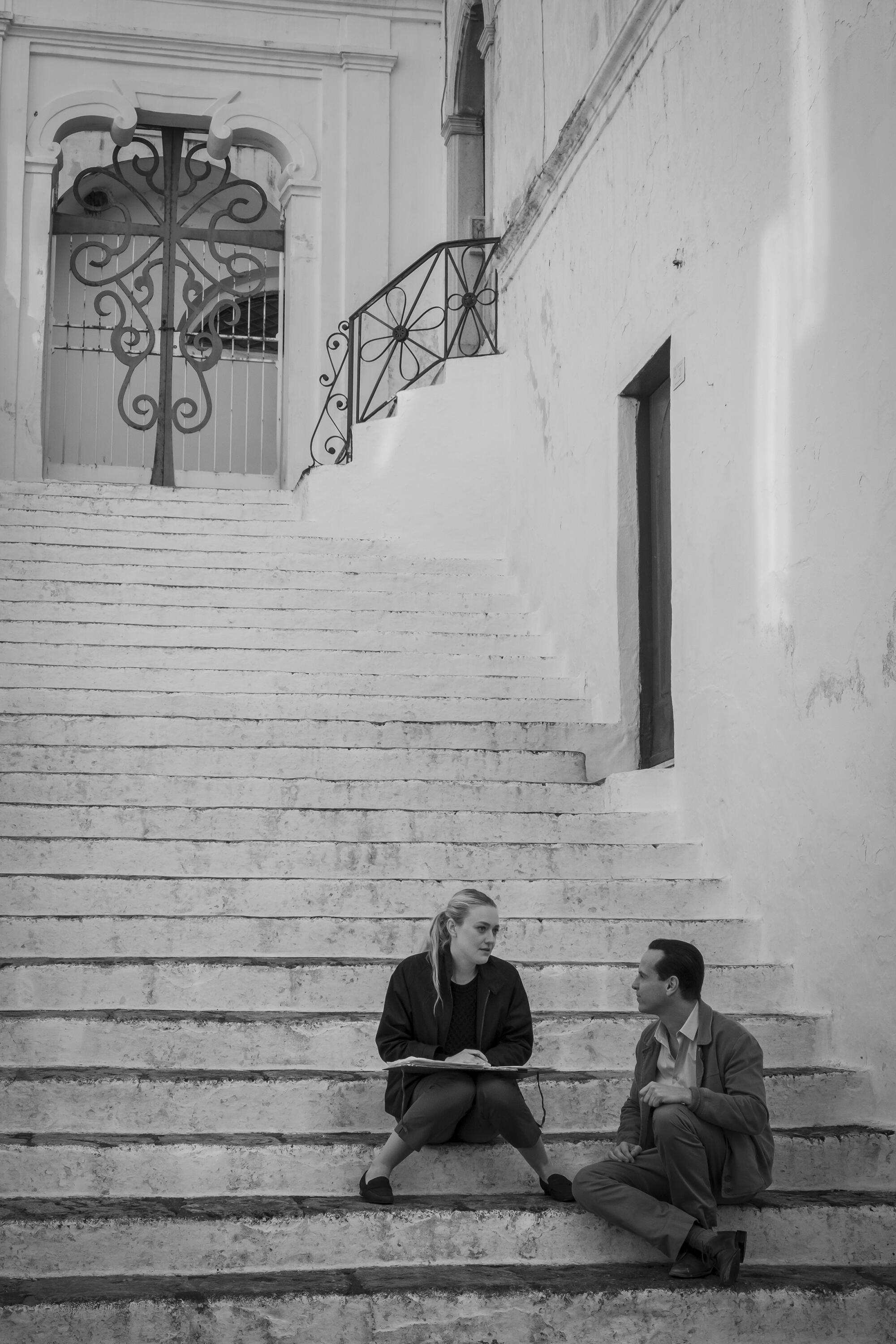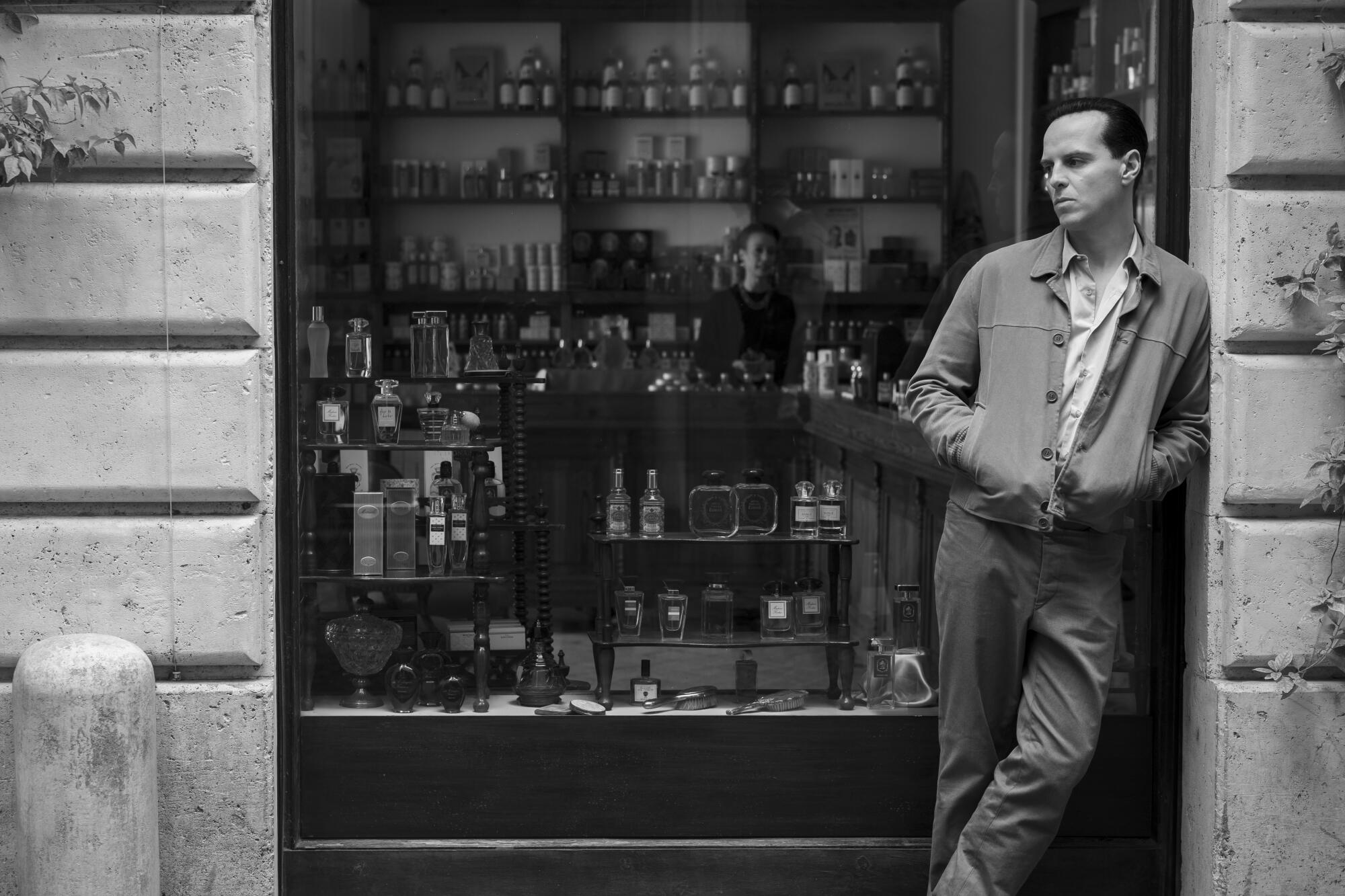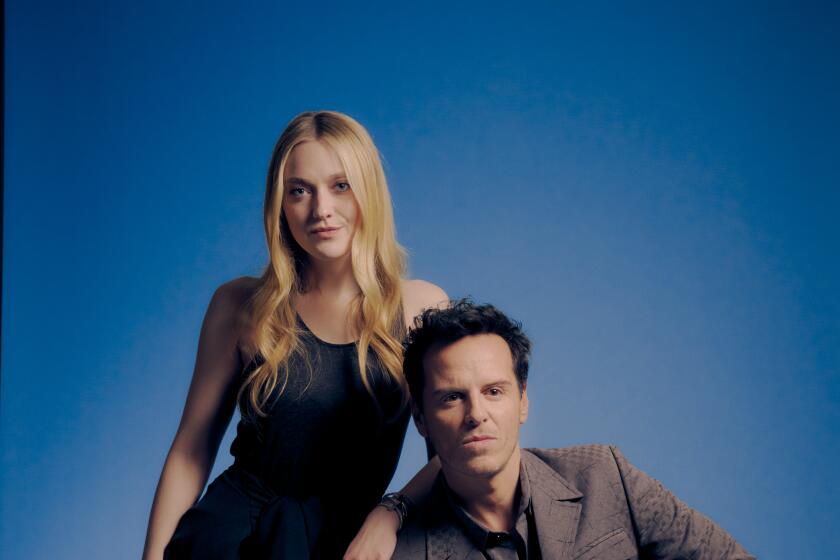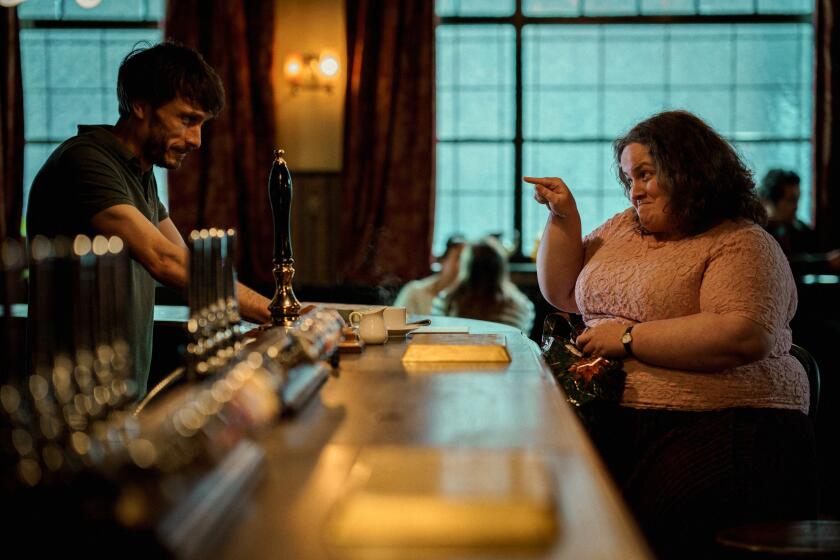
- Share via
Steven Zaillian’s choice in what he chooses to write comes down to two simple questions, as he explains: “Is it interesting to me? Do I think I could do it well?” And in the case of Netflix’s “Ripley,” his eight-part adaptation of Patricia Highsmith’s 1955 novel “The Talented Mr. Ripley,” the answer to both was yes. But Zaillian — who often pens meaty tales of men in morally gray areas, including “Gangs of New York,” “American Gangster,” “Awakenings” and the one that earned him an Oscar in 1994, “Schindler’s List” — didn’t stop with sole screenwriter credit on “Ripley.” He’s its director and an executive producer too. Zaillian spoke with The Envelope via Zoom about taking on the equally gray-area Tom Ripley in stark black-and-white … and one splash of red.
What drew you to Patricia Highsmith’s books in the first place?
I gravitate to things that have a kind of timelessness to them. Even if “Ripley” does take place in 1955 or 1960 or whatever, it’s a timeless story.
The stars of Netflix’s “Ripley,” an adaptation of Patricia Highsmith’s novel, talk about why we can’t get enough of con artists, how they’ve been duped and all those stairs in the show.
Timeless, though the details might not work in today’s world.
At one point, a company I was talking to said, “Yeah, we’d love to make it as long as you make it in the present day.” I said, “I can’t. This story will not work with cellphones and all that stuff.” That’s the reason to keep it in the period. It’s a great period: pre-Beatles, pre-Italy being overrun with tourists. But we’re always going to have these kinds of people in our lives.
Anthony Minghella‘s 1999 sun-splashed film “The Talented Mr. Ripley” is almost a diametrically opposed version from what you’re doing on Netflix. Was that intentional?
It wasn’t a conscious effort to do that. It was a conscious effort to capture what I imagined it would look like when I first read the book. I just couldn’t see this story in color, and I didn’t feel that it was a fashion show or a happy, like you said, sunny postcard look. In the book, [Highsmith] spends a good 50 pages describing his life in New York. It felt important for me to establish this guy who’s really just a petty criminal, and I had enough time to do that.

It’s almost a shame to spend so much time in Italy and not see it in color.
Go back to neorealist films — they’re in black-and-white. “La Dolce Vita” is black-and-white and pretty Italian. Those were the looks of Italy I had in mind.
So had you thought of shooting in—
Film? No. I’m not sure in this day and age what the point is of doing that when you can shoot digitally and have that look like film. But we were careful while shooting; no color monitors on the set. We recorded in color but never looked at it in color.
Though there is that moment when the cat walks through blood and leaves behind red marks. Why single that out?
You’re in the editing room for a year, and you’re playing with things. I said one day, “Know what? Maybe it’d be fun to have the cat paws be the only shot that’s in color.” There’s no hidden meaning. I found it fun.
You directed, wrote and executive produced, which you also did in 2016’s “The Night of.” What’s beneficial about having your hands in so many pies?
The biggest benefit of directing something I’ve written is, whether it turns out good or not, it’s what I intended. I don’t write any differently. I’m one of those people who can’t write it unless I can see it in my mind. So I’ve kind of already seen the movie by the time I’m done writing the script. I’m lucky I can do both.

What made Andrew Scott your Ripley?
I’d only seen him in a few things — “Sherlock,” “Fleabag” and a movie called “Locke,” where he was just a voice on the phone. He created quite a character with just his voice. I was making something where we were going to be with somebody who’s on their own a lot. He has to somehow bring the audience in and have them experience things as he’s experiencing them.
He’s 47, though; the character in Highsmith’s books is in his 20s. Scott isn’t playing mid-20s, right?
When I cast him, he was 41. I felt the characters should all be about the same age — Dickie and Marge and Tom — and around 35 felt good. If you’re 35 and you’re a trust-fund kid, I can see your parents getting pretty concerned about your future. With Tom, I felt he’s this desperate con-man character, so he needed more history behind him than a 25-year-old would have.
And did you have other actors in mind?
He was the first choice. One and only.
Times columnist Glenn Whipp notes in his newsletter that there’s going to be some heartbreak for a few contenders in the Emmys’ limited series categories.
You mentioned including a splash of color for fun. Was including John Malkovich, who played Ripley in 2003’s “Ripley’s Game,” also for fun?
He plays a character who’s not even in “The Talented Mr. Ripley,” and I found a use for that character in the story and wanted to — if we ever do any more of them — to establish this character in the first one. I told that to John, like, “Can you see that this would be fun and cool?” And he said, “Let’s do it.” He was just delightful.
So will you make another of Highsmith’s Ripley novels?
If [executives] asked me that now, the answer would be no. Will enough time go by where I recover and think about it? Yeah. And if I did it, [Malkovich] would definitely be in it. I want him in it.
What makes Tom Ripley so endlessly fascinating?
Con men are interesting characters and make for good drama. But Tom is much more than that. The total of who he is makes him such an enduring character. He’s such a complex and distinctive character. He’s one of the few characters that does bad things that we want to see anyway.
More to Read
From the Oscars to the Emmys.
Get the Envelope newsletter for exclusive awards season coverage, behind-the-scenes stories from the Envelope podcast and columnist Glenn Whipp’s must-read analysis.
You may occasionally receive promotional content from the Los Angeles Times.












